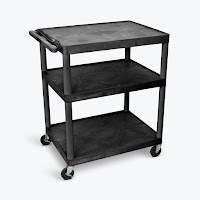Buying Guide: Fire & Burglary Safes
Have important documents, jewelry, cash, and other valuables at home or in your office? You have to understand that these precious possessions need to be secure from theft, fire, and other emergencies.
And the best way to invest in their security isn’t to install cameras or hire security personnel—it is to get a fireproof or/and burglar-proof safe.
But how would you know if the safe you’re eyeing is truly fireproof and burglar-proof?
The solution is simple: check for its fire and burglary ratings.
Underwriters Laboratories (UL) is an international safety certification organization that conducts the safety testing of various products, including safes. UL-listed safes have gone through rigorous testing by this nationally recognized testing laboratory. Each UL-listed safe has a certain fire and burglary rating, which specifies the level of security that a safe offers.
But apart from UL certifications, some safes come with certifications from the Korean Standards Association (KSA) and the Japanese Industrial Standards Committee (JISC). Like UL, these two committees set high standards for safes as well.
So if you’re in the market for a fireproof and burglar-proof safe, you’ve come to the right place. You can check out this comprehensive guide on buying a safe or read this short post about fire and burglary ratings.
It’s no question that a fireproof safe is a great security investment. You can keep your important documents, cash, and other valuables secure when stored in this type of safe—especially during fire emergencies.
Fireproof safes come with fire ratings, which indicate the internal temperature of a safe after it’s exposed to a 1,350- to 1,750-degree Fahrenheit fire for a certain period.
Class 125 1-hour safes, for instance, have maintained an internal temperature of 125 degrees Fahrenheit for 1 hour of fire exposure. Another example is a Class 350 2-hour safe, which has withstood a 2-hour fire exposure while maintaining an internal temperature of 350 degrees Fahrenheit.
Fireproof safes come in Class 125, Class 150, and Class 350, and some can withstand up to three hours of fire exposure.
Because paper typically ignites at around 450 degrees, fire-rated safes are built to keep stored flammable objects from burning during fire emergencies.
On top of that, fireproof safes are designed to be impact-resistant. Some of these safes undergo the 30-foot impact tests by KIS and JIS, which means that these safes can survive a fall from two-story buildings (and keep the stored items safe) in case of a fire emergency.
And the best way to invest in their security isn’t to install cameras or hire security personnel—it is to get a fireproof or/and burglar-proof safe.
But how would you know if the safe you’re eyeing is truly fireproof and burglar-proof?
The solution is simple: check for its fire and burglary ratings.
Underwriters Laboratories (UL) is an international safety certification organization that conducts the safety testing of various products, including safes. UL-listed safes have gone through rigorous testing by this nationally recognized testing laboratory. Each UL-listed safe has a certain fire and burglary rating, which specifies the level of security that a safe offers.
But apart from UL certifications, some safes come with certifications from the Korean Standards Association (KSA) and the Japanese Industrial Standards Committee (JISC). Like UL, these two committees set high standards for safes as well.
So if you’re in the market for a fireproof and burglar-proof safe, you’ve come to the right place. You can check out this comprehensive guide on buying a safe or read this short post about fire and burglary ratings.
Fire Ratings
Arguably, fire incidents are worse than theft. They’re more likely to hurt the people inside a building. What’s more, once flammable valuables are exposed to fire, there’s no way of getting them back in one piece.It’s no question that a fireproof safe is a great security investment. You can keep your important documents, cash, and other valuables secure when stored in this type of safe—especially during fire emergencies.
Fireproof safes come with fire ratings, which indicate the internal temperature of a safe after it’s exposed to a 1,350- to 1,750-degree Fahrenheit fire for a certain period.
Class 125 1-hour safes, for instance, have maintained an internal temperature of 125 degrees Fahrenheit for 1 hour of fire exposure. Another example is a Class 350 2-hour safe, which has withstood a 2-hour fire exposure while maintaining an internal temperature of 350 degrees Fahrenheit.
Fireproof safes come in Class 125, Class 150, and Class 350, and some can withstand up to three hours of fire exposure.
Because paper typically ignites at around 450 degrees, fire-rated safes are built to keep stored flammable objects from burning during fire emergencies.
On top of that, fireproof safes are designed to be impact-resistant. Some of these safes undergo the 30-foot impact tests by KIS and JIS, which means that these safes can survive a fall from two-story buildings (and keep the stored items safe) in case of a fire emergency.
Burglary Ratings
To prove that a safe is indeed burglar-proof, you need to check if it has a burglary rating. These ratings include:- Class B - means that a safe has less than 1/2-inch thick walls and a roughly 1-inch thick door. A B-rated safe is made to resist amateur burglary attempts.
- Class C - indicates that a safe has thicker construction than a Class B safe. A Class C safe has at least 1/2-inch thick walls and a 1-inch (or more) thick door.
- Residential Security Container - has passed a certified safe technician’s test. A residential security container can withstand attacks from less than 3-pound hand tools.
- Class TL - specifies that a safe has endured attacks from hand tools and power tools, like cutting discs and power saws.
- Class TRTL and TXTL - means that a safe has withstood attacks from hand tools, power tools, and torches. TXTL-rated safes can withstand attacks from these tools as well as explosives.

Comments
Post a Comment